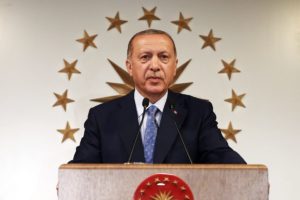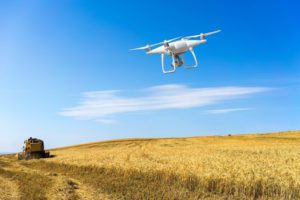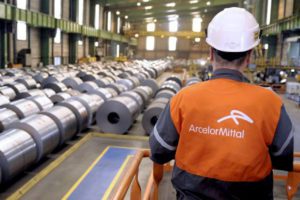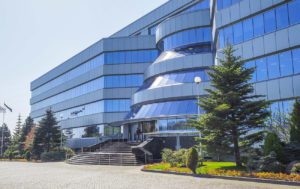
Turkish President Recep Tayyip Erdogan will visit Ukraine on Monday, February 3, the press service of Ukrainian President Volodymyr Zelensky has reported. During the visit, a meeting with Zelensky and the holding of the eighth meeting of the Ukraine-Turkey High Level Strategic Council are planned. The parties will discuss ways to deepen strategic partnership and cooperation in all areas, after which the signing of Ukrainian-Turkish bilateral documents and a joint meeting with media representatives at 13:40 at the Mariyinsky Palace are expected.
Zelensky and Erdogan will also visit the Ukrainian-Turkish business forum, which will be held at the Ukrainian Chamber of Commerce and Industry.

The Economic Development, Trade and Agriculture Ministry of Ukraine has launched a pilot State Agriculture Register for cooperation between agricultural producers and the government.
The ministry said that the Agriculture Register is an online service where registered agricultural producers can submit applications to correct mistakes in the cadaster, apply for government aid and check information about themselves in four registers: the State Land Cadastre, the Register of Legal Entities and Individual Entrepreneurs, the Register of Rights and the Register of Animals.
“One can create an account without leaving home. For registration it is necessary to verify digital signature. The registration is free and available to all farmers, even if a user is not registered as an agricultural producer,” the ministry said.
Mobile teams of operators are currently helping everyone interested to register in six pilot regions: Kyiv, Cherkasy, Odesa, Lviv, Volyn and Mykolaiv regions.
The ministry also said that the register will help to launch programs of targeted government aid and assess their effecti

Alfa Insurance, together with Arzinger law firm, in partnership with AON (London), an international broker, has developed a new product for corporate clients – D&O liability insurance policy, the insurer’s website reports.
The purpose of this insurance product is to protect directors and other officers from claims that may arise as a result of decisions and actions taken by them as part of their duties. The biggest advantage of the D&O product is that it allows avoiding many of the risks associated with significant costs in case if the top manager made the wrong decision.
According to the insurer, D&O insurance covers expenses for the services of lawyers and other experts to protect the top manager in the event of a claim, compensation of losses by third parties, costs of fines and other penalties, other costs may be covered (including the restoration of reputation).
The claims of state bodies, employees, creditors, shareholders, any third parties (competitors, contractors) are also covered.
Alfa Insurance was founded in 2000. It is among the top ten leaders of the Ukrainian insurance market. It offers a versatile portfolio of services, including comprehensive business advocacy programs and a wide range of insurance products for individuals.
Arzinger is an independent law firm with experience in the legal market. It is included in the top five law firms of Ukraine, has representative offices throughout Ukraine and legal partners around the world.

The Nova Poshta group of companies plans to launch Kharkiv Sorting Center in September 2020, Volodymyr Popereshniuk, the co-owner of the company, has said.
“Construction is being carried out at the planned pace. Now 200 people are working on the site, construction work should be completed by May. Then we will begin the installation of equipment. The launch is in September 2020,” he wrote on his Facebook page.
Popereshniuk noted that the center will consist of two buildings. The first of them is designed for sorting, its capacity will be 20,000 shipments per hour, the second will be a cargo terminal with a planned capacity of 100 tonnes per hour. Cargo will be moved inside the facilities with the help of assistant robots.
As reported, in September 2019 Nova Poshta opened a two-hall innovative sorting terminal in Lviv.
In 2019, Nova Poshta, together with the transport airline Eleron, began a test implementation of the project for air delivery of shipments.
In 2019, the company delivered 212 million shipments, which is 22% more than in 2017.
Nova Poshta, founded in 2001, is the leader in the express delivery market in Ukraine. The company’s network consists of more than 6,000 branches throughout the country.

ArcelorMittal Kryvyi Rih, the biggest mining and steel plant in Ukraine, invested $415.4 million in the development of production in 2019, which was 6.2% less compared with 2018 ($433 million). The company said in a press release on Thursday that of these, operating costs amounted to $116 million, and capital – to $299.4 million.
“2019 was a difficult year for all plants of mining and steel complex of Ukraine, while the second half of the year was more difficult than the first one. It was increasingly difficult for Ukrainian exporters to sell their steel products due to a significant drop of prices and general decrease in steel consumption on the world markets. Along with rising costs, this negatively impacted on the financial condition of the steel companies and led to decrease in production. Nevertheless, ArcelorMittal Kryvyi Rih has managed to maintain fairly high rate of investments and continued the implementation of the strategic projects,” the company said.
“Despite the reduction of the investment program budget, in 2020 the company intends to complete the implementation of key investment projects and continue the implementation of new ones,” ArcelorMittal Kryvyi Rih said.
The company said that over the 14 years of operations in Ukraine, ArcelorMittal’s total investments amounted to $9.7 billion ($4.8 billion is the amount of the acquisition of the plant during privatization and $4.9 billion invested in development of production). Until 2022 the total volume of capital investments of ArcelorMittal Kryvyi Rih in the development of production will be $1.8 billion.

Myronivsky Hliboproduct (MHP) based on a preliminary estimate of results for the full year 2019, expects that earnings before interest, taxes, depreciation and amortization (EBITDA) is to be some 15% lower than the company’s previous guidance of $450 million provided in September 2019. According to a company report posted on the website of the London Stock Exchange (LSE) on Thursday, Three factors contributed to the weakening of profitability in the fourth quarter of 2019.
“[It is] strengthening of the Ukrainian hryvnia – as 54% of the company’s revenues are denominated in U.S. dollars, whereas most costs are incurred in UAH, the 13% strengthening of the UAH in Q4 2019 adversely impacted profits, primarily in grain growing operations (accentuated by the seasonality of operations with major expenses incurred in H1 2019),” the company said.
In addition, weak export prices – prices of chicken exports (mainly to the EU) and crops (especially corn) decreased substantially also affected the EBITDA decline. The third factor is the ban on exports to KSA – since September 2019, MHP has been banned from exporting poultry to Saudi Arabia, one of the company’s largest` export markets. MHP said that on 29 January 2020, KSA reopened its market to the import of Ukrainian poultry products (excluding products from the Vinnytsia region).
“Despite this, MHP ended the year with net debt at US$1,143 million and more than $300 million in cash. With no major debt facilities maturing until 2024, very limited short-term borrowings (around 2%) and a modest CAPEX program, it remains MHP’s policy to maintain robust cash reserves that are not materially affected by the weaker than expected financial performance,” MHP said.
The company said that the 2019 dividend is subject to the board of directors’ decision, however, taking into account the lower results, dividends are expected to be lower than last year.